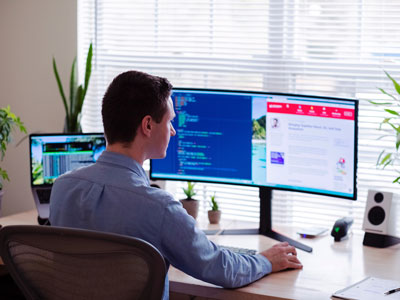Is My Workspace Causing Pain?

How Can I tell if my Workspace is Causing Pain?
Working at a desk all day is often more physically stressful than sitting on the couch. It’s important to take care of your body and make sure you’re not causing unnecessary pain by sitting in an unhealthy way. The following tips can help improve posture and reduce strain on the back—and thus, increase productivity:
Take a look at your chair.
One of the most important factors in preventing back pain is having a chair that supports your spine. A good chair should have lumbar support, meaning it has a curved backrest that lifts and supports your lower and mid-back area. If you have an adjustable chair with armrests, you can also adjust the height and tilt of your seat to suit your body type and comfort level. If you’re sitting for long periods of time at work or home, make sure to take breaks so that you don’t get stiff from sitting too long in one position.
Think about where you keep your neck while you’re sitting.
Your shoulders should be relaxed. They should not be raised or hunched, nor should they be pulled back or rolled forward. Imagine a string from the top of your earlobes through each shoulder blade to the front of your chest (where it would attach if you had an invisible string vest). This “string” keeps everything aligned properly.
Your head should be in line with your spine. Your head needs to sit on top of your neck, which should align with your spine for optimal alignment.
Consider your lower back.
Take a look at your lower back. If you’re sitting in a chair that’s too high, this could cause lower back pain. Make sure your chair is at the right height for you: when you’re sitting with good posture and are looking straight ahead, your feet should be flat on the floor, and your thighs should be parallel to the ground. If not, adjust accordingly.
If your seat is too low, this can cause upper back pain and neck strain from looking down all day at work tasks or computer screens (especially if it’s something like spreadsheets or code). You don’t want to go overboard and ensure there’s enough gap between yourself and any surfaces behind your head—this can cause circulation problems and discomfort over time.
Check out your desk height.
Check the height of your desk. If you’re sitting in a chair, your thighs should be parallel to the floor and you should be able to rest your feet flat on the floor. If you can’t do this, raise your chair or get a footrest (or both).
When in doubt, consult an ergonomic expert at E3 Consulting
It’s important to be aware of how your workspace affects your posture and how you feel. Many people don’t realize that their desk height can cause back pain and other physical issues until they try a new chair or move their monitor up higher on their desk. Contact us for a consultation today for more help feeling better while you work.

